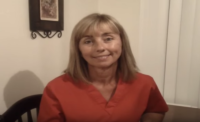Homeowners’ Insurance Made Simple: How Carriers and Policyholders Can Advocate for the Right Policy

Photo: SDI Productions / E+ via Getty Images
Consumers are less-inclined than ever to buy a home, with data revealing nearly half (47%) of Americans find homeownership less appealing and a riskier investment. Further escalating this concern, more than two-thirds (69%) of Americans worry about property damage in high-risk areas.
For policyholders in these regions more prone to extreme weather, navigating the complexities of insurance coverage quickly becomes overwhelming. They need a partner in the insurance industry to provide expertise.
Despite 86% of consumers believing they have a strong grasp on policies, many misinterpret coverage on issues like flood damage. In fact, 56% of consumers are unaware that a standard policy does not cover flood damage. While insurance carriers can provide clarity around these coverage specifics, policyholders must know the right questions to ask and learn to be their own best advocate to prevent lapses in coverage.
Let’s break down the current insurance outlook in high-risk areas, what policyholders can do to better educate themselves and how carriers can leverage technology to enhance collaboration with policyholders.
Today’s Insurance Landscape for High-Risk Regions
While natural disasters impact the entire country, in states with high impact events, carriers have begun to deny claims and coverage and raise rates. These actions are creating vulnerabilities for policyholders looking to proactively protect their homes.
To help keep properties insured, states offer Fair Access to Insurance Requirements (FAIR) plans, which are typically not desired as a first choice and are considered as a last measure when a homeowner has been denied coverage from private insurance carriers. The state-backed insurance plans for “un-insurable areas” provide varying levels of coverage, which can be confusing to navigate.
Amid this uptick in insurance denials, carriers must help homeowners understand why their policy has been denied or not renewed and what they can do to ensure a second-chance with a top tier carrier. For example, individuals may be denied coverage due to poor property maintenance, such as an older roof or a damaged foundation, which can be easily rectified by hiring a contractor to fix these risks. Once policyholders have a better understanding of why their coverage was denied, carriers can provide homeowners with the option of fixing the problem within a reasonable timeframe and apply again, helping to ensure broader coverage and lower premiums.
To better understand the insurance market and how to select the best policy for their property, policyholders need to educate themselves and work closely with an expert to find the right policy in “un-insurable” areas.
Proactive Strategies for Policyholders When Engaging Carriers
For policyholders looking to take charge of their insurance, learning about policy offerings before connecting with carriers allows them to better prepare and understand what questions to ask in order to best advocate for themselves. For example, policyholders in Illinois may not need wildfire protection, but instead wind or hail damage policies, while in states like California wildfire coverage should be a strong consideration.
Once policyholders have a better understanding of what offerings can entail, they can take assessment of their property and possessions. Documenting assets and potential vulnerabilities on the property can better prepare policyholders when approaching carriers with questions and concerns.
The insurance landscape is complex and a key strategy for policyholders looking to best protect themselves is to work with a trusted insurance broker or agent to find the right carrier. When approaching a broker, it’s crucial for policyholders to ask questions around coverage and different loss types to best advocate for the level of coverage they need. For a policyholder in California, these questions may look different than a policyholder in Illinois. Knowing what extreme weather events impact their region and inquiring about policies to protect against those specific events gives policyholders a more comprehensive idea of what is available.
To make policy selection and claims cycles easier to navigate, insurance experts can lean into trusted and emerging technologies to simplify and accelerate processes.
Leveraging Technology to Enhance Collaboration with Policyholders
Working to make the insurance process less complex for policyholders isn’t a walk in the park, but technology solutions, such as generative AI, 360 immersive imagery technology and more, can greatly enhance collaboration.
For example, recommending that individuals upload their policy to solutions like ChatGPT to explain it in layman’s terms is a great way for carriers and consumers to use technology to break down industry barriers and make concepts easier to grasp.
Additionally, by utilizing 360 immersive imagery technology, carriers can better partner with restoration professionals and leverage the tool as a single source of truth to work together quickly and efficiently on behalf of policyholders. By enhancing collaboration with restoration professionals, carriers can act as better partners throughout the entire insurance lifecycle, alleviating pain points in the claims cycle and helping avoid claims denials by pointing to documentation.
For potential homebuyers or current policyholders, navigating the insurance process can feel like a headache, but for those in high-risk areas, it can feel discouraging at best. Carriers and policyholders can partner to increase knowledge, accelerate claims cycles and leverage emerging technologies to improve the current landscape together. Through enhanced partnership, both parties can work towards building an easier insurance ecosystem for all to understand, transforming homeownership from a risky bet to a worthwhile investment.
Looking for a reprint of this article?
From high-res PDFs to custom plaques, order your copy today!








